Biophilic Design: A Smarter Blueprint for Buckhead’s Return-to-Office Future
 As employers and commercial property managers in Buckhead, we stand at a pivotal crossroads, one where we have both the opportunity and the responsibility to shape the next evolution of the workplace. The national return-to-office movement is gaining traction, with many companies mandating in-person attendance. But employees aren’t just being asked to return, they’re being asked to give up something many have come to rely on: the control, comfort, and wellness benefits of a home workspace.
As employers and commercial property managers in Buckhead, we stand at a pivotal crossroads, one where we have both the opportunity and the responsibility to shape the next evolution of the workplace. The national return-to-office movement is gaining traction, with many companies mandating in-person attendance. But employees aren’t just being asked to return, they’re being asked to give up something many have come to rely on: the control, comfort, and wellness benefits of a home workspace.
In a post-remote world, offering square footage is no longer enough, especially in a premium, lifestyle-driven submarket like Buckhead. Today’s tenants and top-tier talent are seeking something more: spaces designed with wellbeing, adaptability, and inclusion in mind. And that’s where biophilic design comes in.
What is Biophilic Design?
Biophilic design is the intentional integration of nature into the built environment through elements like daylight, greenery, natural materials, airflow, and organic textures. Rooted in our innate human connection to nature, this design approach is backed by decades of research and delivers measurable results:
-
Up to 30% reduction in stress
-
Up to 15% improvement in cognitive performance
-
Boosts in creativity, focus, and emotional wellbeing
-
Increases in employee retention and tenant satisfaction
As Kim Oberheu of Plants Forever, Inc. shared with Livable Buckhead’s Sustainability Committee, “biophilia” literally means “love of living systems.” Biophilic design brings that love into our homes, workplaces, retail environments, and public spaces enhancing not just aesthetics, but performance and wellbeing.
Why Biophilic Design Matters Now
 Remote work taught employees how much better they could perform when given control over their environment, lighting, sound, temperature, visual distractions. In contrast, many traditional office spaces rely on rigid layouts, fluorescent lighting, and echoing acoustics that feel more punishing than productive.
Remote work taught employees how much better they could perform when given control over their environment, lighting, sound, temperature, visual distractions. In contrast, many traditional office spaces rely on rigid layouts, fluorescent lighting, and echoing acoustics that feel more punishing than productive.
This is particularly problematic for neurodiverse workers, who often found their first real sense of comfort and control working from home. Open offices with uniform designs can be exclusionary. It’s time to reimagine these spaces with inclusivity in mind.
If we want people to return to the office willingly, and stay long-term, we need to meet them halfway. That doesn’t mean replicating a home office. It means applying what we’ve learned to design for focus, flexibility, comfort, and choice.
Biophilic Design in Practice: What It Looks Like
Biophilic design isn’t one-size-fits-all. In Buckhead, it can be thoughtfully integrated into both new construction and adaptive reuse. Here’s how it takes shape:
Natural Light and Sightlines
-
Floor-to-ceiling windows offering views of trees or skyline
-
Glass partitions that preserve daylight flow and openness
Indoor Greenery and Living Walls
-
Lush plant installations in common areas and shared workspaces
-
Living walls that serve as wellness infrastructure
-
Desk plants as personalization perks
Natural Materials and Organic Textures
-
Use of wood, bamboo, stone, and natural fabrics in finishes and furniture
-
Warm, inviting textures that soften sterile office environments
Water Features and Soundscapes
-
Quiet fountains in lounges or lobbies to reduce noise pollution
-
Sound masking with soft nature tones (like rainfall or rustling leaves)
Fresh Air and Climate Comfort
-
Openable windows and micro-zoned HVAC systems
-
Operable skylights or rooftop terraces that bring in outdoor air
Flexible, Sensory-Smart Layouts
-
Quiet nooks and sensory retreats for focus or neurodiverse needs
-
Adjustable lighting and non-reflective finishes
-
Layouts that support both heads-down work and collaboration
Outdoor Workspaces
-
Wi-Fi-enabled gardens, balconies, and shaded courtyards
-
Rooftop terraces designed for meetings, breaks, or remote work in nature
Buckhead: Built for Biophilic Leadership
Buckhead already champions nature in its outdoor spaces from PATH400 and Garden 684 to the Atlanta History Center woodlands and the green canopies along Peachtree. The next step? Bringing that ethos indoors where employees and tenants spend most of their working hours.
For property managers, biophilic design is a market differentiator. It enhances building value, increases lease durations, and aligns your asset with rising tenant expectations for experience and wellness. For employers, it sends a clear message: you value your people. You’re designing spaces that support mental health, focus, inclusivity and especially the needs of those who don’t thrive in traditional environments.
Biophilia in Action: Where We Live, Work, Shop, and Play
As Kim Oberheu highlighted, biophilic design enhances all environments:
-
Homes: Living walls, houseplants, and natural textures can dramatically improve mood and air quality.
-
Workplaces: Interface’s Atlanta HQ includes fractal-patterned glass inspired by Georgia forests proven to reduce cortisol and enhance cognition.
-
Retail Spaces: The Apple Store at Lenox Square blends interior and exterior nature, inviting people to linger and spend.
-
Public Places: Urban parks like Mountain Way Common showcase biophilic design’s full spectrum from stone paths to shaded benches by flowing water.
Even small additions like fish tanks in retail shops (as studied by Kim and others) increase dwell time and visual engagement. Nature isn’t just a design trend, it’s an economic catalyst.
Return-to-office doesn’t have to be a step backward. It can be a leap forward if we stop designing for the past and start building for what today’s workforce needs to thrive. Let’s move beyond the idea that “more desks equals more productivity.” Let’s embrace a vision of Buckhead as a leader in workplace design, just as it has always led in luxury, livability, and lifestyle. When we design with nature in mind, we don’t just fill offices we fill them with energy, purpose, and performance. And when we prioritize comfort, focus, and flexibility, we design for everyone not just extroverts or the neurotypical, but every person walking through the door.
Because when people love where they work, they bring their best. Because when spaces reflect human needs, performance follows. And because when we bring nature inside, we build environments that endure.






